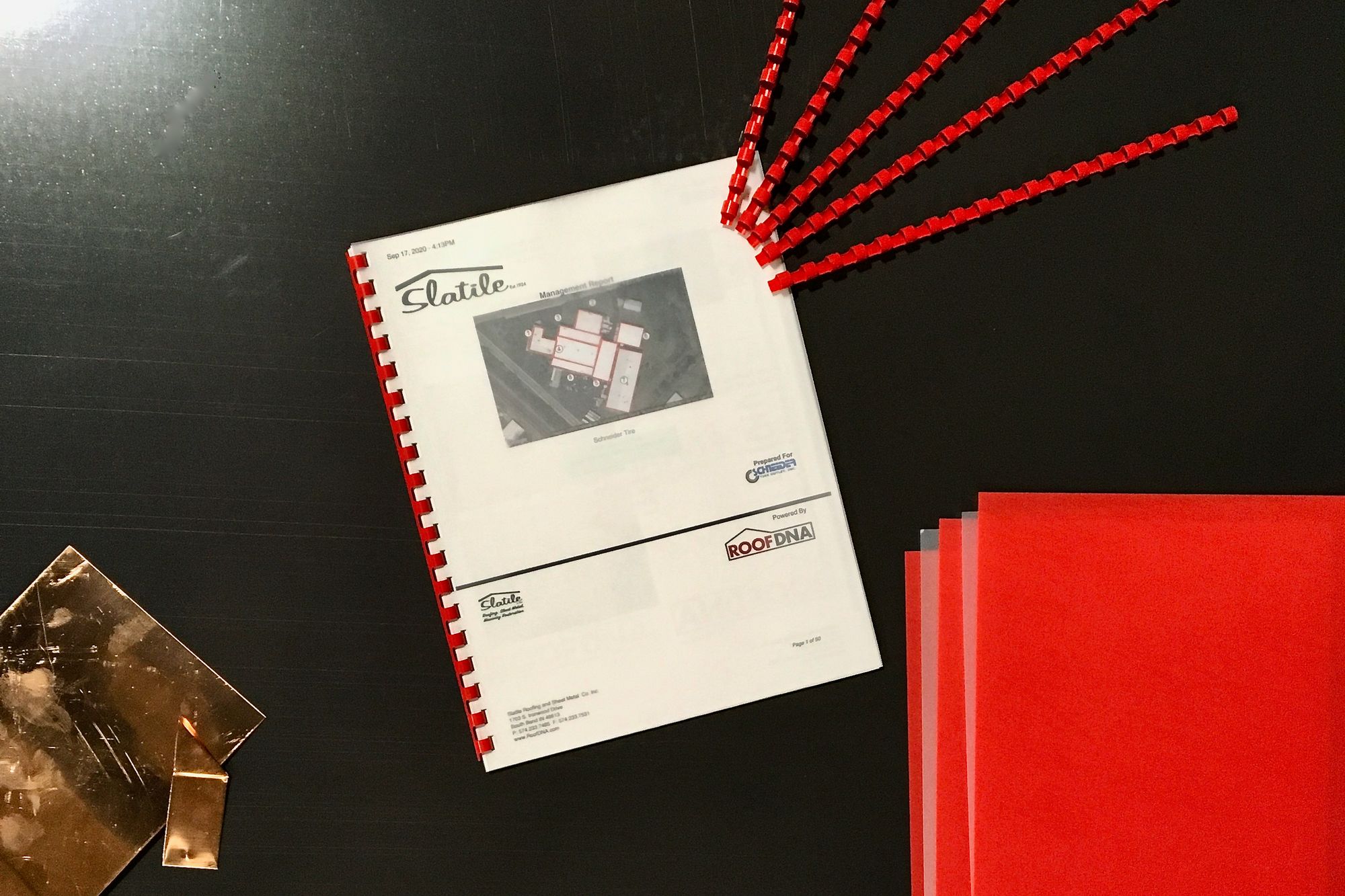Create an Artifact
Take the time, put in the extra effort, create an artifact. (with my notes)

The reports we generate from our RoofDNA inspections are compiled as PDFs from our roofing software and are very easy to email to our clients. However, as easy as it is, I’ve known from the beginning that the printed form is how these reports could bring the most value long-term.
I’ve been trying different techniques with the printed versions from standard staples to comb binding to recommending the clients print them on their end. As I try each method I put myself in the clients shoes and ask myself “Would I use this?” and “How?”
My answers to these two questions led me to my current strategy:
I email the reports as soon as they’ve been reviewed and are ready to go (the sooner I can get this information in my clients hands the better for them) but I don’t stop there.
I then print out a double-sided1, color copy2 and take it to our in-house comb binding machine and prep the pages3. I bind it with a red binding4, a frosted cover5, and a red back cover5. Then it slides into an addressed envelope6, is sealed with a sticker7 and is sent out the next day8.
The information in a RoofDNA inspection report is very valuable not only today, but for months and years to come. By creating an artifact, something to hold onto and file away, we are adding value to the client in easily returning to the information when needed, but also adding value to Slatile at a future date when roof work is inevitably needed and the RoofDNA report is the client’s primary reference document.
Take the time, put in the extra effort, create an artifact.
- Double-sided: because who likes flipping through a bound booklet and see a blank white page 50% of the time; on top of that I save a little paper in the process which will save space in my clients files and hopefully prevent any negative backlash from eco-conscious clients.
- Color: because when looking at inspection photos, sometimes a subtle shift in color can tell the entire story of the deficiency we’ve photographed.
- Prep the pages: subtle alignment variations can become magnified when creating a 30+ page bound report; take your time, this is going to be around for a while.
- Red Binding: After filing a few reports I realized that the actual comb binding is often the only thing visible in a filing cabinet or a stack of several documents. Anything I could do to differentiate that small piece of plastic would be the only chance I had at a visual reminder weeks or years down the road. What better color than red; it’s harkens importance, especially in times of crisis such as a leaking ceiling, and it’s on-brand with RoofDNA.
- Frosted front cover/Red back cover: I tried binding without covers but the reports lacked a sense of importance and substance. But when I used a solid black cover/back cover you would have to open the first page to confirm which report this is. With just a back cover the front didn’t feel protected or complete. Only slightly better were the glossy clear covers because they were lightweight and felt ‘barely there.’ Frosted covers have been perfect. To continue the purpose of the ‘red’ in the binding I use a red plastic back cover.
One other thing I'd like to try would be to use a laser cutter to cut out windows on the front cover, probably red plastic, to reveal the important info but maintaining a bright red overall look and feel. - Addressed Envelope: this is a standard 8.5x11 full page envelope due to the binding and it is often hand-addressed to add a sense of personalization and humanness when received.
I wonder if an 11” cardboard tube might take this to the next level? - Sticker: We have few different types a stickers we use, one idicates our membership in the National Roofing Contractors Association, another touts our nearly 100 years in business. The purpose here is to add context to an otherwise nondescript envelope and subtly reinforce our reputation.
- The next day: Rarely do I print and prepare these before the mail comes so they are set in the outbox and picked up the next day. These aren’t urgent because the PDF was already sent/received but I do want to ensure they arrive while still relevant and to be filed appropriately. It may, on some occasions, prove to be worthwhile to ship these via a carrier with more urgency, what do you think?
